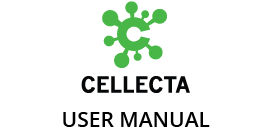- From the provided Master Plate, aliquot Hybridization master mix (5 µl/well) containing a mix of barcoded Reverse GSPs in 1-8 of 96-well plates.
- T or B cells are sorted in a 96-well plate(s) with aliquoted hybridization buffer (5 µl) containing a mix of barcoded Reverse GSPs (primers in each well comprising a unique well/cell-specific barcode) designed for all immune receptor chains (for TCR or BCR) and set of T or B cell subtyping marker genes (for DriverMap scAIR Immunophenotyping Assay).
- After hybridization of cellular mRNA with Rev GSPs, and 96 mRNA-Rev GSP hybrids (each with a cell-specific barcode) are pooled together and purified by SPRIselect magnetic beads.
- Pooled, purified mRNA-Rev GSP hybrids are eluted from SPRIselect beads, and cDNA is synthesized by Reverse transcriptase from Rev GSPs.
- Sense DNA strand (a complementary strand of cDNA product) is synthesized by DNA polymerase using a mix of Forward (Fwd) GSPs. Fwd GSPs and Rev GSPs are designed to cover both full-length (CDR1-2-3) immune receptor chains and 100-250 bp gene-specific cDNA fragments of T/B cell marker genes (for DriverMap scAIR Immunophenotyping Assay).
- Fwd GSP-extended DNAs are amplified using universal anchor primers (AP1 and AP2). The Second round of nested PCR with Illumina’s UD dual-indexed anchor primers allows combining different NGS libraries together (e.g., from two to eight 96-well plates) and adds P5 and P7 sequences necessary for Illumina’s Paired-End 600-nt sequencing on NextSeq 2000/MiSeq instruments.
Last modified:
13 August 2025
Need more help with this?
Contact Us

